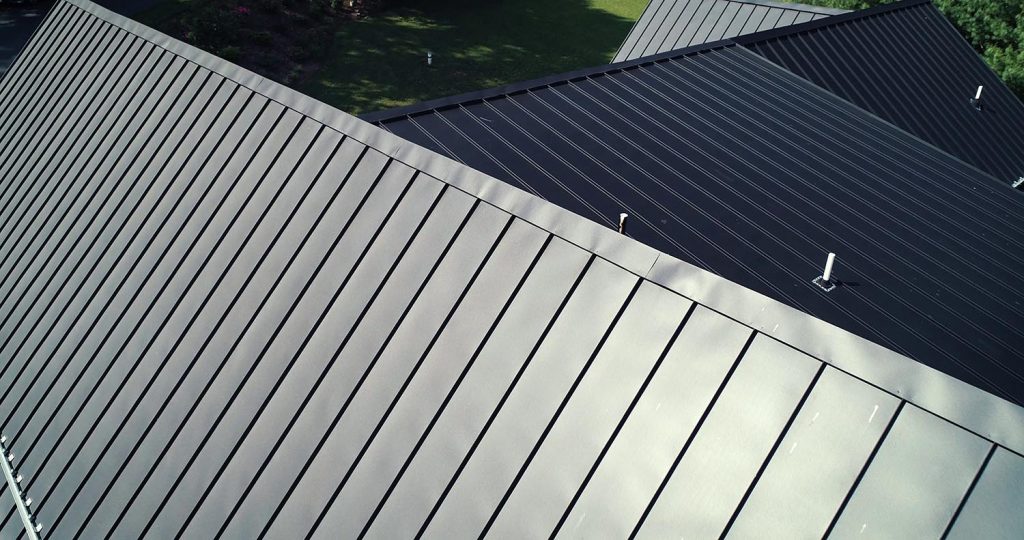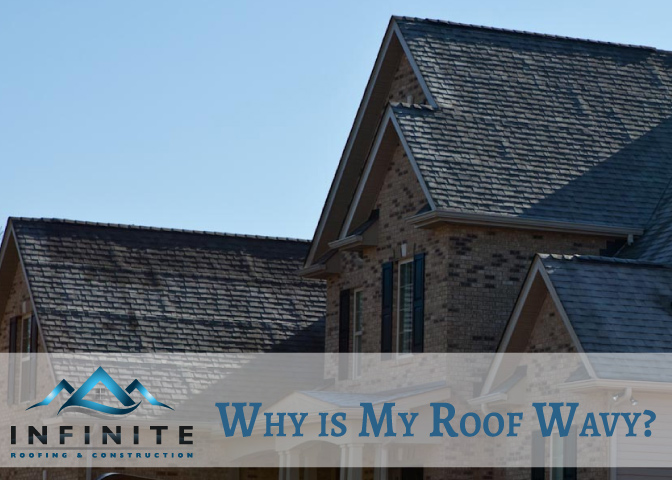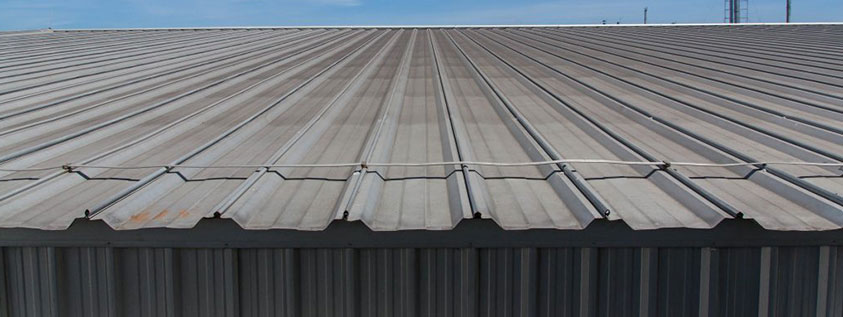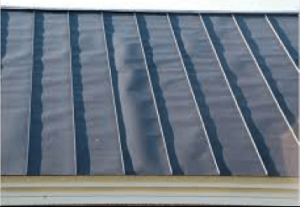Have you ever looked at your metal roof and noticed that it appears wavy? It can be puzzling to see those ripples and bumps, especially when you expect a sleek and smooth surface. But fear not, there’s a logical explanation behind this phenomenon. In this article, we’ll explore why your metal roof may look wavy and discuss the factors that contribute to this common issue. So, let’s uncover the truth and put your mind at ease about those wavy metal roof waves.
Possible Causes of Wavy Metal Roof
Improper Installation
Improper installation is one of the most common causes of a wavy metal roof. When the installation process is not done correctly, it can lead to misalignment, incorrect measurements, inadequate fastening, and improper sealant application. These factors can contribute to the waviness of the roof.
Expansion and Contraction of the Metal Panels
Metal panels are known to expand and contract with temperature fluctuations. If there is inadequate allowance for thermal expansion during the installation of the roof, it can cause the panels to move and create waves. Additionally, improperly secured fasteners can also contribute to the panels’ movement and result in a wavy appearance.
Low-Quality or Thin Metal Panels
The quality and thickness of the metal panels used for the roof can significantly impact its overall flatness. Low-quality or thin metal panels may lack the necessary stiffness to maintain a flat surface, making them more susceptible to denting and bending. Cheaper materials can also lead to inconsistencies in the manufacturing process, further contributing to a wavy roof.
Inadequate Roof Support
Adequate roof support is essential for maintaining the structural integrity of the roof. If the roof lacks sufficient or weak rafters or trusses, or if proper bracing or purlins are not in place, it can cause the roof to sag and create waves. Excessive roof spans without enough support can also contribute to the wavy appearance.
Improper Flashing or Trim Installation
Flashing and trim are crucial components of a metal roof as they help prevent water penetration and secure the roof’s edges. Incorrect installation of these components, inadequate or improper flashing at transitions, and improperly sealed joints and seams can lead to water damage, which can, in turn, result in a wavy roof.
Effects of Wavy Metal Roof
Aesthetic Concerns
The most noticeable effect of a wavy metal roof is its impact on the overall aesthetics of a building. Visible waves or ripples along the roof surface create an uneven and inconsistent appearance, making the roof look unappealing. Additionally, the reflection of sunlight on the uneven surface can also be visually displeasing.
Reduced Lifespan of the Roof
A wavy metal roof is a clear indicator of a weakened structural integrity. The presence of waves indicates that the panels are not adequately supported and may not be able to withstand the normal wear and tear over time. As a result, the roof’s lifespan is significantly reduced, and it becomes more susceptible to rust, corrosion, leaks, and other forms of damage.
Leakages and Water Damage
The waviness of a metal roof can compromise its ability to effectively shed water, leading to leakages and water damage. When the panels are not properly aligned or sealed, water can penetrate through the gaps, causing moisture buildup and potential structural damage. These leaks can lead to costly repairs and further deterioration of the roof.
Increased Energy Consumption
A wavy metal roof can also contribute to increased energy consumption. When the surface of the roof is not flat, it can create air gaps, allowing heat to escape during the winter and enter during the summer. This lack of insulation leads to higher energy usage for heating and cooling purposes, resulting in increased utility bills.
Decreased Property Value
The presence of a wavy metal roof can negatively impact the overall value of a property. Potential buyers may view the roof as a sign of poor maintenance and subpar construction. The curb appeal of the property may be diminished, potentially deterring interested parties and affecting the resale value of the property.

Improper Installation
Improper installation is a critical factor that can contribute to the waviness of a metal roof. Several aspects of installation can go wrong, resulting in a less-than-desirable outcome.
Incorrect Measurement and Alignment
One of the main causes of improper installation is incorrect measurement and alignment of the metal panels. If the measurements are not precise, the panels may not fit together seamlessly, leading to uneven surfaces and visible waves. Similarly, if the alignment is off, the panels will not lay flat, adding to the wavy appearance.
Inadequate Fastening
Properly fastening the metal panels is essential for a flat and stable roof. Inadequate fastening can cause the panels to shift and move, resulting in waves. Insufficient or improperly spaced fasteners may fail to hold the panels securely in place, leading to an uneven roof surface.
Insufficient or Improper Underlayment
Underlayment plays a crucial role in providing a stable base for the metal panels and preventing moisture penetration. If the underlayment is insufficient or improperly installed, it can compromise the overall flatness of the roof. This can contribute to the waviness and also increase the risk of leaks and water damage.
Lack of Proper Sealant Application
Sealant application is vital for creating a watertight barrier between the metal panels and preventing leaks. Without proper sealant application, moisture can seep into the gaps between the panels, causing structural damage and contributing to the wavy appearance. The omission of sealant or using an inadequate sealant can result in an ineffective protective layer.
Expansion and Contraction of Metal Panels
Thermal expansion and contraction are inherent characteristics of metal, which can lead to waviness if not properly addressed during the installation process.
Inadequate Allowance for Thermal Expansion
Metal panels expand and contract with temperature fluctuations. If there is not enough allowance for this thermal movement, the panels can exert pressure on each other, leading to waves and ripples. Properly accounting for the anticipated expansion and contraction ensures the panels can move freely without causing deformations.
Temperature Fluctuations Causing Panel Movement
Changes in temperature can cause the metal panels to expand or contract, resulting in movement. If the fasteners securing the panels are not properly installed or lack the necessary flexibility to accommodate these movements, it can contribute to the waviness of the roof. Panel movement due to temperature fluctuations should be anticipated and accounted for during installation.
Improperly Secured Fasteners
Fasteners play a critical role in holding the metal panels in place. If the fasteners are not securely tightened or appropriately positioned, they may allow the panels to shift and move. This movement can lead to the formation of waves on the roof surface. Ensuring proper installation and adequate fastening of the fasteners is essential for minimizing panel movement and maintaining a flat roof.

Low-Quality or Thin Metal Panels
The quality and thickness of the metal panels used for a roof can significantly affect its flatness and resistance to waviness.
Inadequate Stiffness to Maintain a Flat Surface
Low-quality or thin metal panels may lack the necessary stiffness to maintain a flat surface. These panels are more prone to bowing and bending under their weight or external loads, resulting in waves. Investing in higher-quality and thicker metal panels can help prevent this issue and provide better structural integrity.
Susceptibility to Denting and Bending
Low-quality or thin metal panels are more susceptible to denting and bending. Any deformations on the surface of the panels can contribute to the overall waviness of the roof. Thicker and more durable metal panels are better equipped to withstand impacts and maintain their shape over time.
Cheaper Material Leading to Inconsistencies
Using cheaper materials for the metal panels can lead to inconsistencies in their manufacturing. These inconsistencies can result in uneven panel thicknesses, variations in metal quality, and other defects that contribute to a wavy appearance. Investing in higher-quality and more consistent materials can help ensure a flat and visually appealing roof.
Inadequate Roof Support
The roof support system is essential for maintaining the structural integrity of a metal roof. Insufficient support can cause the roof to sag, resulting in waves and ripples.
Insufficient or Weak Rafters or Trusses
Rafters or trusses provide the primary support framework for the roof. If these components are insufficient in strength or improperly installed, they may fail to adequately support the weight of the metal panels. This lack of support can lead to sagging and the formation of waves on the roof surface.
Lack of Proper Bracing or Purlins
Bracing and purlins are secondary support elements that provide additional stability to the roof structure. If these components are missing or inadequately installed, they can contribute to the waviness of the roof. Properly installing bracing or purlins ensures that the weight of the metal panels is evenly distributed and supported.
Excessive Roof Span Without Enough Support
The span of a roof refers to the distance between supporting elements. If the roof span is excessive without enough support in place, it can lead to sagging and the formation of waves. Adequate support, with appropriately spaced rafters, trusses, and additional bracing, is crucial for preventing the roof from becoming wavy.

Improper Flashing or Trim Installation
Flashing and trim are essential components of a metal roof, and their improper installation can contribute to the waviness.
Incorrect Installation of Roof Edges
The edges of a metal roof require proper flashing to prevent water infiltration and maintain a flat surface. If the flashing is incorrectly installed or insufficiently secured, it can result in uneven edges and contribute to the waviness of the roof. Proper installation techniques, such as using the appropriate flashing materials and ensuring a tight seal, are crucial for maintaining a flat roof edge.
Inadequate or Improper Flashing at Transitions
Transitions, such as roof-to-wall or roof-to-chimney junctions, require proper flashing to ensure a watertight seal. Inadequate or improper flashing at these transition points can lead to water penetration, moisture buildup, and structural damage. The resulting deterioration can contribute to the overall waviness of the roof.
Improperly Sealed Joints and Seams
Metal roof panels have joints and seams that require proper sealing to prevent water infiltration. If these joints and seams are improperly sealed or if sealant application is omitted, water can penetrate through the gaps and contribute to the waviness of the roof. Ensuring proper sealing techniques are employed during installation helps maintain the roof’s flatness and waterproof integrity.
Aesthetic Concerns
The waviness of a metal roof can greatly impact its appearance, detracting from the overall aesthetics and visual appeal of a building.
Visible Waves or Ripples Along the Roof Surface
A wavy metal roof will have visible waves or ripples along its surface. These irregularities create an unattractive and inconsistent appearance, making the roof stand out in a negative way. The straight and smooth lines typically associated with metal roofs are lost, giving the impression of poor craftsmanship or installation.
Uneven or Inconsistent Appearance
The presence of waves on a metal roof leads to an uneven and inconsistent appearance. This lack of uniformity is visually unappealing and can draw attention away from other architectural elements of a building. The wavy surface disrupts the overall aesthetic harmony and can create an impression of neglect or substandard construction.
Reflection of Sunlight on the Uneven Surface
The uneven surface of a wavy metal roof can cause sunlight to reflect unevenly, resulting in varying levels of brightness or glare. This reflection can be visually displeasing when observed from different angles or when sunlight hits the roof at specific times of the day. The inconsistent reflection adds to the overall unattractiveness of the roof.

Reduced Lifespan of the Roof
A wavy metal roof indicates underlying issues that compromise its structural integrity, leading to a shorter lifespan compared to a properly installed and maintained roof.
Weakened Structural Integrity
Waves on a metal roof are a clear sign of a weakened structural integrity. The misalignments, panel movements, and lack of support contribute to the overall instability of the roof. This compromised structural integrity can result in accelerated wear and tear, increasing the risk of further damage or collapse.
Increased Susceptibility to Rust and Corrosion
The waviness of a metal roof can create areas where moisture can collect and stagnate. This stagnant water increases the likelihood of rust and corrosion, as metal is more prone to these issues when exposed to moisture. Rust and corrosion further weaken the roof’s structure and contribute to a decreased lifespan.
Higher Probability of Leaks and Damage
The waviness of a metal roof can create gaps, cracks, or compromised seals, making it more susceptible to leaks and water damage. If the panels are not properly aligned and sealed, water can penetrate through the gaps and ingress into the building. These leaks can cause extensive damage to the roof structure, insulation, and interior components.
Decreased Property Value
A wavy metal roof can have a negative impact on the overall value of a property. Potential buyers consider the condition and appearance of the roof as one of the key factors when evaluating a property’s worth.
Negative Impact on Curb Appeal
Curb appeal plays a significant role in attracting potential buyers and influencing their perception of a property. A wavy metal roof significantly detracts from the visual appeal of a building’s exterior. The presence of visible waves or ripples can create an unfavorable first impression, potentially turning away interested parties.
Perception of Poor Maintenance
A wavy metal roof may be perceived as a sign of poor maintenance or neglect, harming the overall impression of the property. Potential buyers may assume that if the roof is in poor condition, other aspects of the property may also require significant repairs or maintenance. This perception can lower their interest in purchasing the property or lead to lower offers.
Potentially Affecting Property Resale Value
The presence of a wavy metal roof can impact the resale value of a property. Buyers may negotiate a lower price due to the perceived cost and effort required to repair or replace the roof. The waviness can be seen as a defect that diminishes the overall desirability of the property, potentially resulting in a decreased resale value.
In conclusion, a wavy metal roof can be caused by various factors, including improper installation, expansion and contraction of the metal panels, low-quality or thin metal panels, inadequate roof support, and improper flashing or trim installation. The effects of a wavy roof include aesthetic concerns, reduced lifespan, leakages, increased energy consumption, and decreased property value. Addressing these causes and effects is crucial to ensure a flat, visually appealing, and long-lasting metal roof. Proper installation, using high-quality materials, providing adequate roof support, and ensuring correct flashing and trim installation can help prevent and rectify the waviness issue, preserving the integrity and value of the property.
